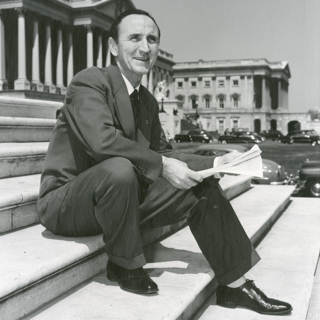2/9/21
Feburary 9, 2021
Montana tribal leaders discuss elevated pandemic impacts on Native Americans
By Haley Yarborough
COVID-19 continues to devastate tribal communities across Montana, despite tribal leaders’ early implementation of pandemic safety protocols that often surpassed state and federal restrictions.
According to the Centers for Disease Control, Native Americans are killed by COVID-19 at nearly twice the rate of white people. And in Montana, Native Americans are 11 times more likely to die from the virus than white residents, according to a Montana Office of Epidemiology and Scientific Support study.
A panel of Montana tribal leaders addressed the role of systemic inequalities in COVID-19’s impact on Indigenous communities in UM’s second lecture in a series of Mansfield Dialogues on Wednesday, Feb. 3.
Cora Neumann, a public health expert and the founder of “We Are Montana,” mediated the discussion with questions about vaccine rollout, mental health and systemic issues undermining the COVID-19 response.
“Indigenous leaders have stayed ahead of the curve,” Neumann said. “The loss in these communities is not for the loss of leadership.”
Shelly Fyant, the chairwoman of the Confederated Salish and Kootenai Tribes, featured on the panel to discuss her response to the COVID-19 pandemic. Fyant helped form a unified command system with Lake County, which enacted social distancing measures at the beginning of the pandemic.
“I realized early on that ‘Wow, we’re a sovereign nation, we need to do this, we need to take action,’” Fyant said.
Fyant helped tackle community spread from out-of-state visitors by only issuing recreation permits to local Flathead reservation residents. Fyant said revenue increased by $200,000 over the previous years, despite the crackdown on tourism.
But Fyant clarified that the health and safety of residents is more important than the economy.
Underlying health conditions play a major role in the disproportionate impact of COVID-19 on Indigenous communities. While vaccine rollout is a top priority, Fyant said she also hopes to see more food sovereignty to support Indigenous people’s health, and to reconnect with Native culture.
“I think it’s really important that we try to get back to those Indigenous roots,” Fyant said.
Kaci Wallette, a tribal council member at Fort Peck, also discussed Indigenous health. Poverty, high rates of substance abuse, limited healthcare and crowded households all elevate mental health risk for reservation residents.
Montana has the highest suicide rate in the country. In a typical year, Native American youth die by suicide at nearly twice the rate of their white peers, according to the CDC. With COVID-19 driving people into isolation, Wallette said she worries Native youth suicides will spike.
“We’ve been trying to address this suicide pandemic before COVID even hit,” Wallette said.
During a pandemic, this feat is particularly difficult. Wallette said since schools opened, 29% of Fort Peck’s COVID-19 cases are 14 to 20-year-olds, while 62% of COVID-19 related deaths are 55 and older.
She said Fort Peck continues to make efforts to mitigate mental health issues with small, socially distanced community and telehealth events.
“Suddenly everyone is a public health leader,” Neumann said. “From a parent to a teacher to a shop owner. Everyone who joins the effort to protect the wider community really is a healthcare hero.”
Originally published at http://www.montanakaimin.com/news/montana-tribal-leaders-discuss-elevated-pandemic-impacts-on-natives/article_7bb76b94-6b56-11eb-bf26-c7c0cc45761d.html
